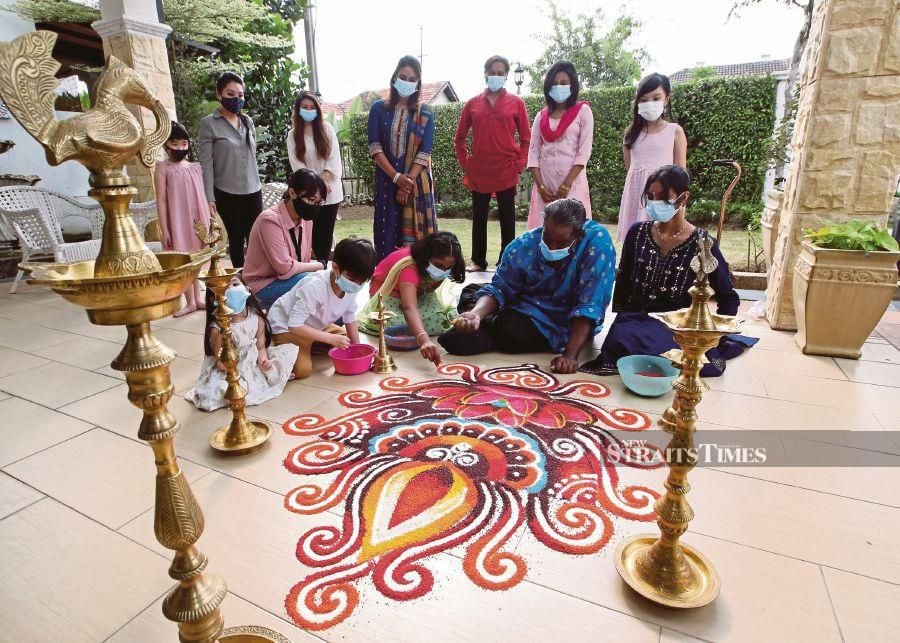Geometry, Colours & Charity: Here's Why We Draw Kolams During Deepavali
Kolam is a traditional art form that holds great significance during the Festival of Lights.
Every year, you know Deepavali is around the corner when you start to spot these intricate colourful designs on the floors of homes, shopping malls, and hotels.
However, do you know what they are and why they are made?
Kolam, also known as rangoli or muggulu, is a traditional art form that holds great significance during Deepavali
The word 'kolam' is derived from Sanskrit, and means beauty, form, or shape.
The age-old art form involves creating colourful designs on the floor using dyed flour, coloured powders, sand, rice, and even flower petals.
In the olden days, kolams were made with edible grains and natural dyes from vegetable colouring and were drawn on the floor to feed insects and birds. This is in line with Hindu teachings that encourage followers to show charity and be generous, even to little creatures.
It is also believed that drawing kolams at the entrance of homes welcomes Lakshmi, the Goddess of Prosperity, to drive away evil spirits and create an auspicious atmosphere during the festival.
The designs of a kolam can vary in complexity and size, ranging from simple geometric patterns to intricate and elaborate motifs
Notably, in South India, kolams are identified by their geometric shapes and symmetry with white outlines, dots, and curves.
Meanwhile, in North India, where it is known as rangoli, the art more often takes the form of flowers, lamps, and auspicious animals such as elephants and peacocks.
Traditionally, kolams are drawn by women from Tamil households for special occasions
It is said that drawing kolam is an art that fulfils physical, philosophical, and spiritual aims.
Besides visualising the final design and colours, creating a kolam requires hours of physical labour and patience as the artist needs to kneel, stretch, and meticulously hand pour coloured rice onto the ground.
However, nowadays, drawing kolam is a communal activity done on the eve of Deepavali, with family members, friends, and neighbours coming together to decorate the entrance of their homes.






